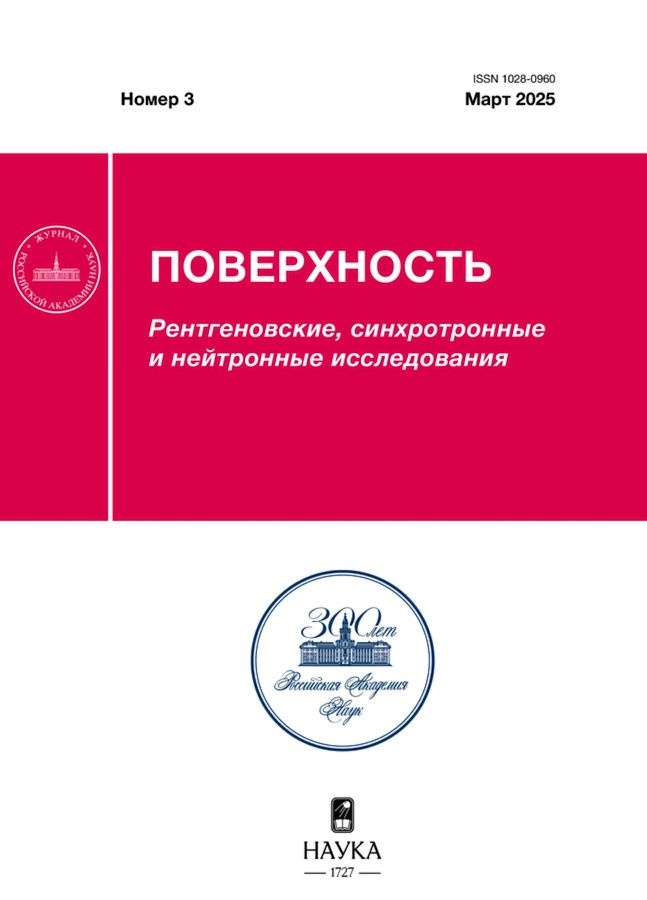Change in the charge state of MOS structures under radiation and high-field injection at constant voltage
- Autores: Andreev D.V.1, Kornev S.A.1, Andreev V.V.1
-
Afiliações:
- Bauman Moscow State Technical University
- Edição: Nº 3 (2025)
- Páginas: 62-68
- Seção: Articles
- URL: https://archivog.com/1028-0960/article/view/687679
- DOI: https://doi.org/10.31857/S1028096025030104
- EDN: https://elibrary.ru/ELZTDG
- ID: 687679
Citar
Texto integral
Resumo
The features of radiation-induced positive charge accumulation in the gate dielectric film under high-field injection of electrons at the constant voltage are studied. The conditions are determined, under which the current injection mode can be used to increase the dose sensitivity of MOS (metal–oxide–semiconductor) and RADFET (Radiation sensing Field Effect Transistor) sensors. The model describing physical effects taking place in the gate dielectric and at the MOS structure interfaces under concurrent influence of radiation and high-field injection of electrons at constant voltage are improved. It is shown that the absorbed radiation dose at constant voltage on the sample can be calculated from changes in the current density of high-field electron injection. This dose can increase by several orders of magnitude due to the accumulation of radiation-induced positive charge in the gate dielectric. The influence of radiation intensity on the accumulation of radiation-induced positive charge in the gate dielectric of MOS sensors is determined.
Palavras-chave
Texto integral
Sobre autores
D. Andreev
Bauman Moscow State Technical University
Autor responsável pela correspondência
Email: dmitrii_andreev@bmstu.ru
Rússia, Kaluga Branch, Kaluga
S. Kornev
Bauman Moscow State Technical University
Email: dmitrii_andreev@bmstu.ru
Rússia, Kaluga Branch, Kaluga
V. Andreev
Bauman Moscow State Technical University
Email: dmitrii_andreev@bmstu.ru
Rússia, Kaluga Branch, Kaluga
Bibliografia
- Yilmaz E., Kaleli B., Turan R. // Nucl. Instrum. Methods Phys. Res. B. 2007. V. 264. P. 287. http://doi.org/10.1016/j.nimb.2007.08.081
- Kahraman A., Yilmaz E., Aktag A., Kaya S. // IEEE Trans. Nucl. Sci. 2016. V. 63. № 2. P. 1284. http://doi.org/10.1109/TNS.2016.2524625
- Aktağ A., Yilmaz E., Mogaddam N.A.P., Aygün G., Cantas A., Turan R. // Nucl. Instrum. Methods Phys. Res. B. 2010. V. 268. № 22. P. 3417. http://doi.org/10.1016/j.nimb.2010.09.007
- Yilmaz E., Turan R. // Sensors Actuators. A. 2008. V. 141. № 1. Р. 1. http://doi.org/10.1016/j.sna.2007.07.001
- Holmes-Siedle A., Adams L. // Radiat. Phys. Chem. 1986. V. 28. P. 235. http://doi.org/10.1016/1359-0197(86)90134-7
- Pejović M.M. // Radiat. Phys. Chem. 2017. V. 130. P. 221. http://doi.org/10.1016/j.radphyschem.2016.08.027
- Ristic G.S., Vasovic N.D., Kovacevic M., Jaksic A.B. // Nucl. Instrum. Methods Phys. Res. B. 2011. V. 269. P. 2703. http://doi.org/10.1016/j.nimb.2011.08.015
- Ristic G.S., Ilic S.D., Andjelkovic M.S., Duane R., Palma A.J., Lalena A.M., Krstic M.D., Jaksic A.B. // Nuclear Instrum. Methods Phys. Res. A. 2022. V. 1029. P. 166473. http://doi.org/10.1016/j.nima.2022.166473
- Lipovetzky J., Holmes–Siedle A., Inza M.G., Carbonetto S., Redin E., Faigon A. // IEEE Trans. Nucl. Sci. 2012. V. 59. P. 3133. http://doi.org/10.1109/TNS.2012.2222667
- Siebel O.F., Pereira J.G., Souza R.S., Ramirez-Fernandez F.J., Schneider M.C., Galup-Montoro C. // Radiat. Measur. 2015. V. 75. P. 53. http://doi.org/10.1016/j.radmeas.2015.03.004
- Kulhar M., Dhoot K., Pandya A. // IEEE Trans. Nucl. Sci. 2019. V. 66. P. 2220. http://doi.org/ 10.1109/TNS.2019.2942955
- Camanzi B., Holmes-Siedle A.G. // Nature Mater. 2008. V. seven. P. 343. http://doi.org/ 10.1038/nmat2159
- Oldham T.R., McLean F.B. // IEEE Trans. Nucl. Sci. 2003. V. 50. P. 483. http://doi.org/10.1109/TNS.2003.812927
- Schwank J.R., Shaneyfelt M.R., Fleetwood D.M., Felix J.A., Dodd P.E., Paillet P., Ferlet-Cavrois V. // IEEE Trans. Nucl. Sci. 2008. V. 55. P. 1833. http://doi.org/10.1109/TNS.2008.2001040
- Lipovetzky J., Redin E.G., Faigon A. // IEEE Trans. Nucl. Sci. 2007. V. 54. P. 1244. http://doi.org/10.1109/TNS.2007.895122
- Peng L., Hu D., Jia Y., Wu Y., An P., Jia G. // IEEE Trans. Nucl. Sci. 2017. V. 64. P. 2633. http://doi.org/10.1109/TNS.2017.2744679
- Andreev D.V., Bondarenko G.G., Andreev V.V., Stolyarov A.A. // Sensors. 2020. V. 20. P. 2382. http://doi.org/10.3390/s20082382
- Andreev V.V., Maslovsky V.M., Andreev D.V., Stolyarov A.A. // Proc. SPIE. 2019. V. 11022. P. 1102207. http://doi.org/10.1117/12.2521985
- Andreev D.V., Bondarenko G.G., Andreev V.V. // J. Surf. Invest. X-ray, Synchrotron Neutron Tech. 2023. V. 17. P. 48. http://doi.org/10.1134/S1027451023010056
- Lai S.K. // J. Appl. Phys. 1983. V. 54. P. 2540. http://doi.org/10.1063/1.332323
- Arnold D., Cartier E., DiMaria D.J. // Phys. Rev. B. 1994. V. 49. P. 10278. http://doi.org/10.1103/PhysRevB.49.10278
- Strong A.W., Wu E.Y., Vollertsen R., Sune J., Rosa G.L., Rauch S.E., Sullivan T.D. Reliability Wearout Mechanisms in Advanced CMOS Technologies. Wiley-IEEE Press, 2009. 624 p.
- Palumbo F., Wen C., Lombardo S., Pazos S., Aguirre F., Eizenberg M., Hui F., Lanza M. // Adv. Funct. Mater. 2019. V. 29. P. 1900657. http://doi.org/10.1002/adfm.201900657
Arquivos suplementares













